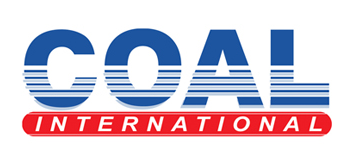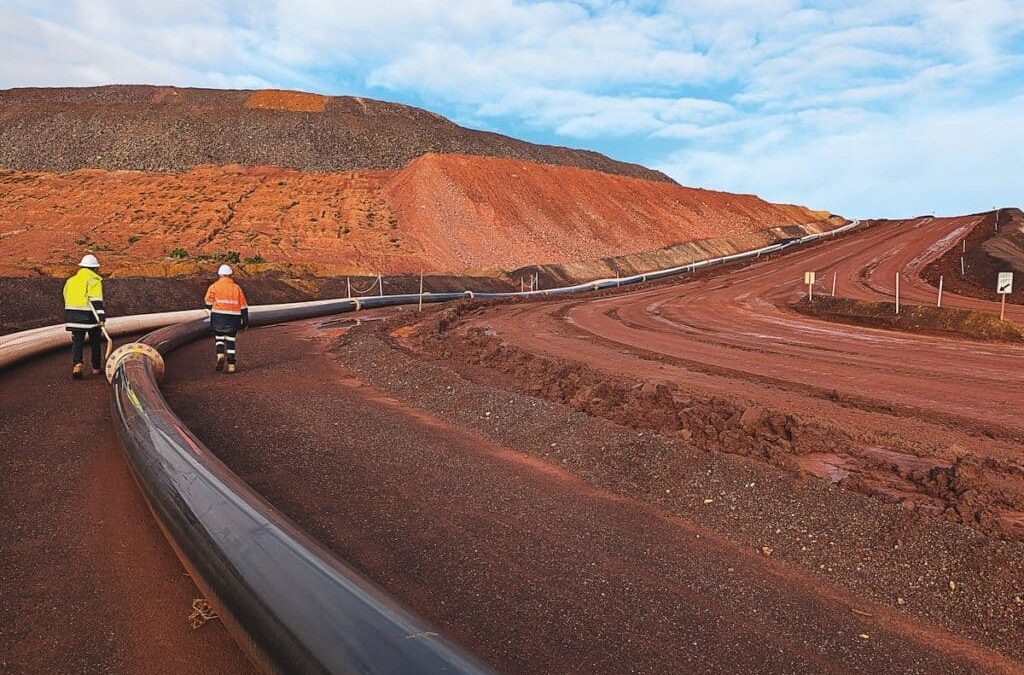The same ultra-smooth material that helps artificial joints move freely is now solving one of mining’s most persistent headaches.
Weir’s advanced pipeline solution Arterra is an ultra-high molecular weight polyethylene (UHMWPE), material proven in medical implants and marine applications that dramatically extends pipeline life in some of Australia’s harshest environments.
With more than 15 operational installations across the country and around the globe, some stretching up to 20km, the technology is demonstrating that materials engineered for barnacle-resistant fenders and friction-free knee replacements can deliver results when pumping abrasive mine tailings.
Weir’s pipeline solutions manager in Australia, Tatum Hall, said the technology delivers significantly lower operating costs.
“The surface smoothness of this material offers friction benefits that translate directly to reduced power requirements and extended service life,” she said. “We’re seeing significant yearly savings at sites that make the switch.”

Fighting extreme wear
The reality of pipeline failure hit home at an iron ore operation in South Australia a few years ago. The site was using conventional high-density polyethylene (HDPE) pipelines, which were wearing through in 3–4 weeks. The culprit wasn’t corrosion – it was physics.
“They had some slack flow portions of the pipeline. Because of the steep slope, the material was moving faster than it was being pumped; we’re talking up to 12m per second, which is incredibly fast for pipeline operations,” Hall said.
“When you’re pushing particles at that velocity through a pipe filled with high-density solids, the wear is relentless.”
The site’s initial response – replacing failed sections every 4–6 weeks – was costly and operationally disruptive. After switching to Arterra UHMWPE pipeline, the same sections now last 16–18 months, a 16-fold improvement in service life.
Beyond wear from abrasion, chemical scaling presents another challenge. In operations with heavy chemical processing, such as uranium transport and mining, minerals crystallise on pipe walls, progressively narrowing the internal diameter and choking flow capacity.
“It’s a constant maintenance headache,” Hall said. “The scaling builds up into hard crystals, layer upon layer, until you’re losing significant capacity.”
The secret to the performance of Arterra UHMWPE pipelines lies in the molecular structure of UHMWPE itself. Arterra pipes have a molecular weight of 3.5×106 grams per mole (g/mol), compared to HDPE with a molecular weight of 0.5x106g/mol. With a surface roughness of just 0.2 microns, the material is exceptionally smooth, almost hydrophobic in its resistance to adhesion.
“It’s this smoothness that gives it the edge,” Hall said. “We’re talking about a material roughness that’s incredibly low compared to other pipeline materials. Nothing really sticks to it.”
That property made UHMWPE a natural choice for marine applications, where its slipperiness prevents barnacle growth and bio-fouling. In medical applications, the same characteristics allow hip and knee replacements to move freely without friction or adverse tissue reactions, thanks to the material’s chemical inertness.
But translating those properties into mining pipelines required solving a significant engineering challenge. The very smoothness that makes UHMWPE so effective also makes it impossible to weld.
“Around 2014, we developed a way of flanging the ends and creating connections that seal reliably at the pressures required for mining,” Hall said. “That was the breakthrough that opened up this material for pipeline applications.”
Another key advantage is customisation. Where conventional pipelines come in standardised diameters, Arterra UHMWPE pipelines can be specified to exact internal dimensions based on an operation’s specific design requirements. The wall thickness is then calculated from three components: pressure rating, temperature de-rating, and wear allowance.
“Instead of trying to match your design to available pipe sizes, you can optimise the internal diameter for your specific flow requirements,” Hall said.
Since entering the mining market in 2016, the technology has proven particularly well-suited to tailings applications, where long distances and abrasive slurries create the most demanding conditions.

Safer maintenance and lower costs
The anti-scaling properties are delivering strong results in mining. Arterra UHMWPE pipelines at an operation dealing with heavy chemical processing helped the site dramatically reduce its maintenance burden.
“They were pressure washing their pipes monthly at 3000 kilopascals [kPa], which introduces significant safety risks for workers,” Hall said. “After switching to Arterra pipelines, they went to quarterly cleaning at just 1000kPa.
“That’s a much safer operation and far easier to schedule.”
The reduced friction also means lower pumping power requirements, with savings becoming increasingly significant on longer pipeline runs. On installations exceeding 5km, the optimised internal diameter and smooth surface combine to significantly reduce energy consumption.
Arterra UHMWPE pipelines are available in two configurations, depending on application requirements.
The bare plastic pipe offers maximum flexibility for tailings applications where extreme pressures aren’t a factor. For higher-pressure environments, a lined steel option uses Arterra UHMWPE pipes as an internal lining within steel pipe, capable of handling pressures exceeding 10,000kPa, whereas a bare pipe can handle pressures up to 4000kPa, depending on size.
The technology has found its natural home in tailings transport, typically the longest pipeline runs on a mine site, where abrasive slurries must travel from processing plants to disposal areas.
With installations now proven across Australian operations, Arterra UHMWPE pipelines represent a case where borrowing innovation from other industries has delivered tangible improvements in durability, safety and operational efficiency for mining.



